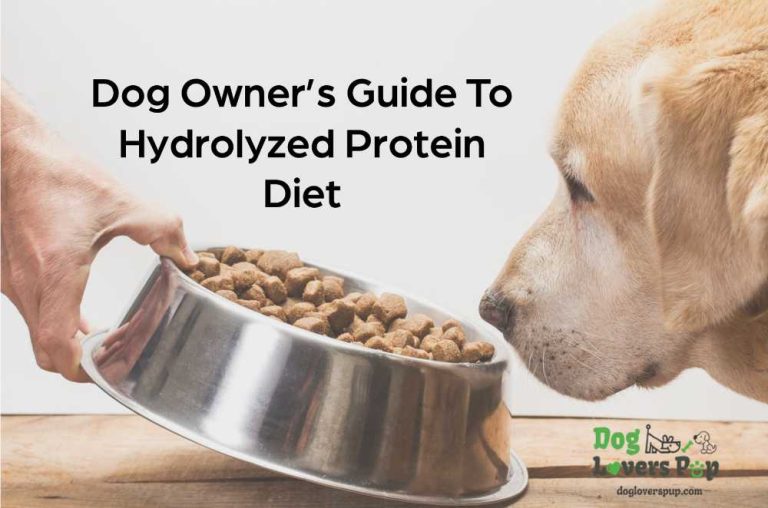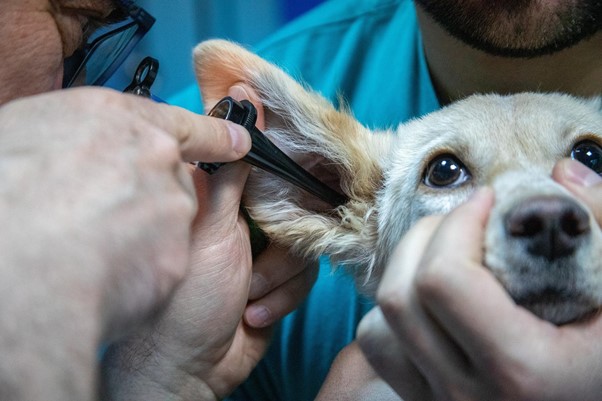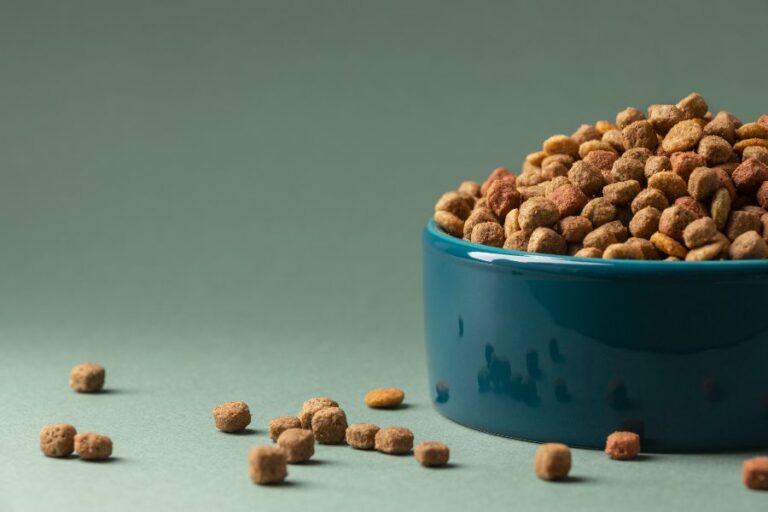A Dog Owner's Guide To Low Fat Diet For Dogs
Dogs need fat to fuel their muscles and make the energy they require for movement. They should eat some fats in their diets but not too much. To avoid excess weight gain and obesity, which can lead to serious health problems such as heart disease and diabetes, it is advisable to feed your four-legged friends with low-fat or reduced-fat options.
If you’re new to the world of “doggie diets,” or if you’ve been bamboozled into thinking that all exercise and no treat will keep the pounds off your pup, then read on as we discuss everything from how much fat content should be in a dog’s diet, to the benefits and risks of low-fat dog food. We’ll cover what is low fat dog food, why it is good for your pet’s health and how to pick the best type of food for him/her. We’ll also provide some information on potential side effects associated with feeding your pup zero-fat food and which option might be better for your four-legged friend.

Let's start by discussing what is considered "low fat"?
The first thing you should know is that dog food products may have different levels of fat content. Low-fat dog food has a lower amount of fat than regular dog food and is, therefore, better for dogs who naturally need less fat in their diets such as those with joint problems, liver issues, etc. They come in dry (kibble) and wet (canned) varieties; either of them is fine as long as they meet the daily nutritional requirements set out by AAFCO (Association of American Feed Control Officials).
Dog food manufacturers usually indicate the fat content on the package. In general, any dog food that contains 10% or less of crude fat will fall under this category. In terms of dry dog food, you’ll have an easier time finding one that has good enough percentages because it’s required by law that the label includes its content percentage in terms of crude fat and moisture.
For wet food, it’s recommended that you look for one with at least 20% crude protein and 10% crude fat content.
Health issues that require putting dogs on a low-fat diet
Certain conditions in dogs may require low-fat food instead of the usual kibble that’s high in fat. The common health issues in dogs include heart problems (clogged arteries), high blood pressure, arthritis, diabetes and pancreatitis. Pancreatitis is inflammation of the pancreas, which depending on its severity, can be life-threatening to your dog. High-fat diets are known for causing pancreatitis resulting in an inflamed pancreas that secretes enzymes necessary for the digestion of food. Over time, this condition can become chronic and ultimately untreatable requiring the dog’s regular diet plan to be changed completely!
Certain breeds are predisposed to problems such as hip dysplasia which makes them more susceptible to developing arthritis leaving their vet with no other option than prescribing a low-fat diet from early on in the pooch’s life.
Dogs that are overweight tend to develop serious health conditions like diabetes and heart diseases. To avoid excess weight gain which can lead to other health problems such as diabetes, joint pain, heart disease, etc. it is advisable to feed your four-legged friends with low-fat or reduced-fat options.
Benefits of low-fat dog food
There are many benefits associated with choosing to feed your dog a low-fat diet. Here are some of the key benefits:
- Weight loss for obese dogs: This is definitely one of the biggest benefits of giving your pup a diet filled with healthy ingredients rather than fatty ones. Overweight dogs are prone to arthritis, liver problems, joint pain, breathing issues, lack of mobility, suffering from different types of skin conditions, etc. They also tend to develop serious health conditions like diabetes and heart diseases. Low-fat dog food reduces the risk of your pooch developing obesity which can lead to these serious health problems. If you’re reading this guide because your furry friend is having weight problems, we suggest switching to low-fat dog food ASAP!
- Decrease in allergies: It has been shown that dogs who are prone to food allergies can benefit hugely from a switch to a healthy, low-fat diet. This is because the main ingredient responsible for most dog food allergies is chicken, which also happens to be one of the main ingredients in fatty foods. If your pup suffers from skin irritation or frequent ear infections, switching to hypoallergenic low-fat diet might be the best thing you can do for him/her.
- Decreased risk of arthritis in dogs: Osteoarthritis is another common problem for elderly dogs. The symptoms might include difficulty walking, pain when standing up or lying down, stiffness in the joints etc. In addition to other medications and supplements, researchers have found out that a healthy diet can significantly improve canine arthritis symptoms.
- Reduces risk of other health issues: Keeping your pooch’s weight under control will decrease his chances of developing serious health conditions such as diabetes and heart disease. Then you’ll be able to enjoy your pet’s company for more years to come. This means fewer trips to the vet as well!
- Improved digestion – Feeding your dog low fat will keep his digestive system running smoothly; that means less smelly “doggie breath,” among other things.
Low-fat diets also have a positive effect on the skin, coat and eyes of some canines so they are generally preferred by vets over regular high-fat dog foods. Keeping his weight down and giving him more energy, for example, will go a long way towards making you both happy!
Is a high-fat diet bad for dogs?
It depends on an individual dog’s health conditions and dietary needs. Although low-fat dog food is recommended for overweight or obese dogs, this type of diet will not be suitable for all canines. In some cases, high-fat dog food is necessary to increase the energy levels of working dogs and even more so during whelping and lactation.
Therefore, when choosing a diet it is recommended to choose the right amount of fat for your dog’s breed, size and life stage. You can use tools such as body condition score charts. If you are unsure how much caloric intake your dog should have each day then consult your veterinarian who can give you advice on proper feeding guidelines based on your dog’s age, breed, weight and activity level.
Dry low fat or wet low fat - which is the better option?
Some vets recommend canned dog food for overweight dogs because it has a lower calorie count and can therefore help promote weight loss. However, there are other vets that prefer dry (kibble) over canned food due to its higher nutrient value. This does not mean that wet dog diets are inferior by any means but just that kibble is usually the preference of most veterinarians. The occasional feeding of canned dog food is generally fine so if you’d like to give your dog a “treat” once in a while, feel free to do so!
The choice between dry or wet low-fat dog food is ultimately up to you as long as it meets the daily nutritional requirements set out by AAFCO (Association of American Feed Control Officials).
How to safely transition to low fat dog food?
Switching to a low-fat diet for your dog can be a daunting task, but with these simple tips, it can be an easy transition for both you and your four-legged friend!
The most important thing to remember during the switch is to gradually introduce your dog to its new diet. You can’t just change their food one day and expect them not to experience any symptoms of dietary upset such as stomach upset, bloating, diarrhea, or vomiting – it’s simply not safe!
When you’re switching your pup onto a low-fat diet from a regular one, gradually increase the new diet and decrease the amount of existing food every week until your dog is eating only their new low-fat food while maintaining his current weight.
Monitor your dog’s stool output and weight to ensure that he or she is adjusting well to the new food. If you notice diarrhea, vomiting or any other adverse reactions then stop the transition process and go back to feeding your dog high-fat food until you consult with a veterinarian.
Side effects of transitioning to low-fat dog food
When transitioning from high fat to low fat diet, some dogs may experience loose stools, increased hunger and in some cases nausea. This is just the body adjusting, so persevere and these side effects should subside in a week or two!
Some dogs will go through what is known as “reverse calorie reaction.” This means that the dog’s body is reacting to the sudden decrease of calories and they will actually gain weight. As previously mentioned, some dogs may also experience diarrhea, vomiting or other adverse reactions when transitioning to low-fat food. If this is the case, stop the transition immediately and go back to feeding your dog high-fat food until you consult with a veterinarian.
Potential risks are minimal, but if your canine friend refuses to eat or experience any of these problems, make sure to consult with your vet about the issue.
How to choose the best low-fat dog food?
When choosing a low-fat diet for your canine companion, it is important for dog owners to choose a high-quality product for their furry friends. You’ll want to read labels carefully before making your selection. It is important to read the ingredients on a dog food label so you know whether or not your furry friend is getting the right amount of fats every day. Here are some tips we suggest you follow to make sure your canine friend will stay healthy and live a long life:
Always read the label and look for specific information.
You’ll find there typically two figures – fat percentage and pet food calories per serving (cal/kg). If possible, try looking at the percentage of protein, fiber, and fatty acids as well. They’re just as important for your dog’s diet as the fat percentage is.
Dogs require healthy fats in their diet for healthy living. A dog’s diet should consist of roughly 10 – 15% fat (a minimum of 5.5% fat in their diet) with the rest of the 80% consisting of proteins and carbohydrates. An adult dog’s diet can contain up to 50% carbohydrates.
Protein levels should be at least 25%, but 30%+ is optimal. Fiber content should be higher than 2%, and close to 5% for an adult dog. Calcium and phosphor may seem unimportant but they influence overall health so don’t skip this part.
Also, check out the list of ingredients and try looking at the top five ingredients’ list first. They should be listed in the largest amount which means they’re the main components (such as beef, chicken, and other meats). Meat by-products or fats do not belong at the top of this list though!
Be sure to read the label on your food’s packaging before making any purchases because it will inform you of how many calories are found in one cup of that brand, along with other essential nutrients included. Reading the label on your dog’s food package is crucial in determining if it fits with your intended feeding plan.
Many reputable brands offer high-quality and nutritious low-fat diets. If you like to get some recommendations, check out our reviews on the top-rated low fat dog food brands here.
Final Thoughts
Dogs, like humans, can succumb to health conditions such as diabetes, joint pain, heart disease and obesity too. Low-fat dog foods are made of lower calorie count to help your dog lose weight without reducing essential nutrients. They are highly recommended for canine companions that are overweight and for dogs suffering from certain health conditions such as arthritis, pancreatitis and diabetes. They are also beneficial for dogs with digestive issues. A lower fat content means these foods are easier to digest and can help furry friends that suffer from diarrhea and vomiting.
If your vet has recommended you put your dog on a low-fat diet, stay safe by avoiding low-quality brands that may contain harmful additives. Avoid food that has corn, soybean, and other fillers. There are plenty of excellent low fat dog food brands out there made specifically for dogs recovering from illnesses or needing weight management. And remember, if you have any questions or concerns about your dog food and nutrition, always reach out to your veterinarian.
Disclaimer: This article doesn’t intend to replace professional veterinary advice, nor should it be used as a substitute for veterinary services, diagnosis, or treatment. The content on this website, including information and opinions expressed herein, are intended for general informational purposes only. In case you have concerns or questions regarding your dog’s health and diet requirements, please consult your veterinarian before doing anything that might affect it.
DogLoversPup.com and the writer are not responsible or liable for any damage, liability, costs, or claims arising from any possible consequences of the reader’s action after reading this article.




